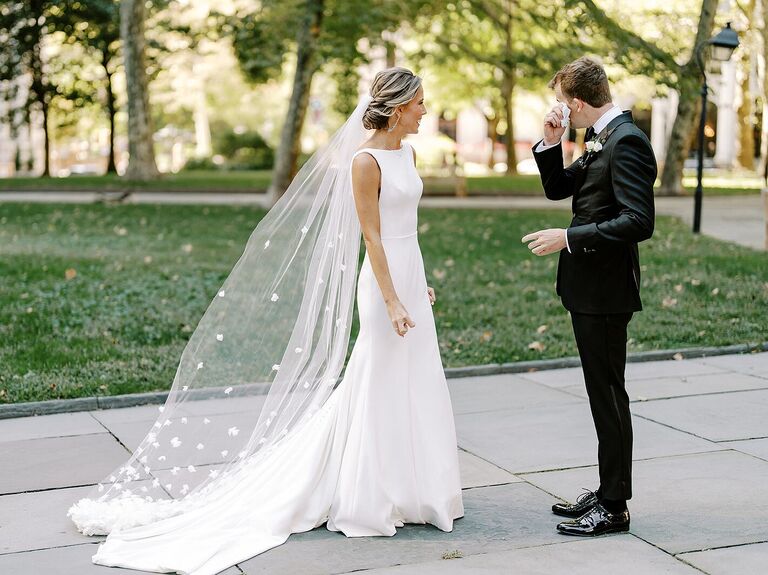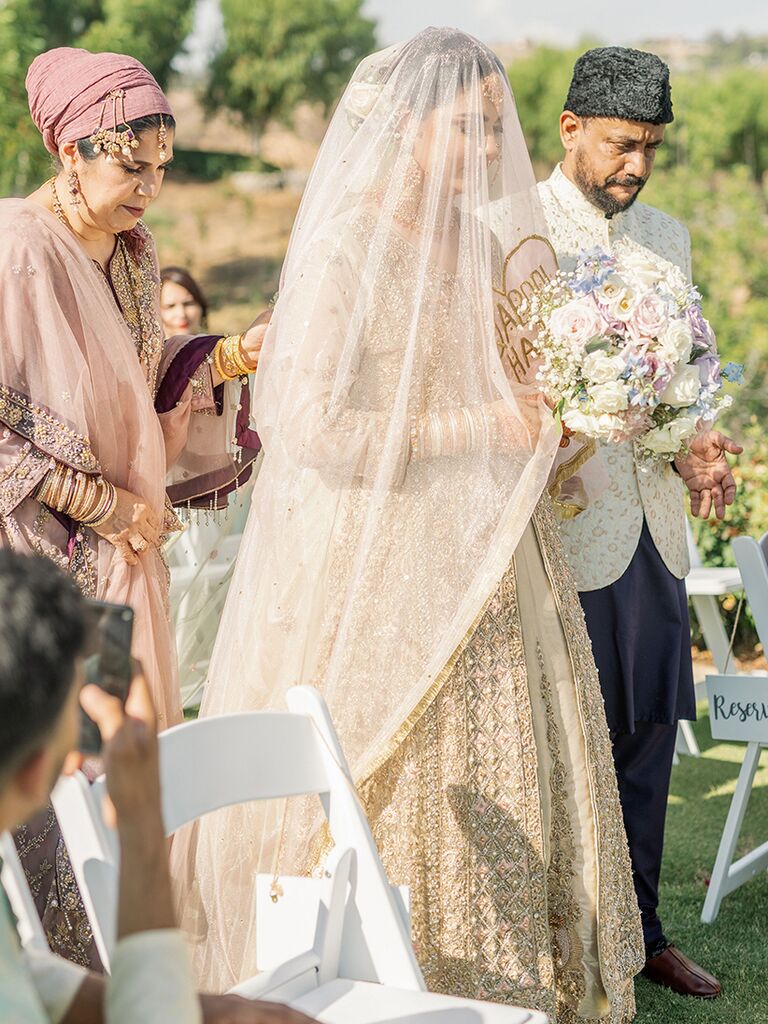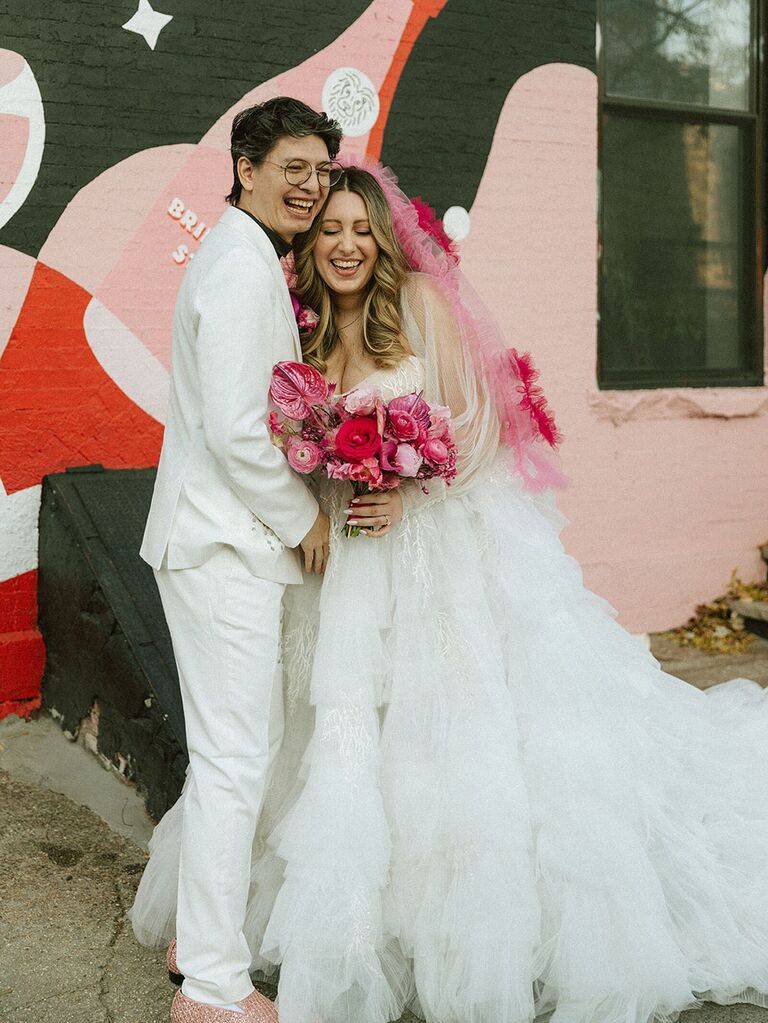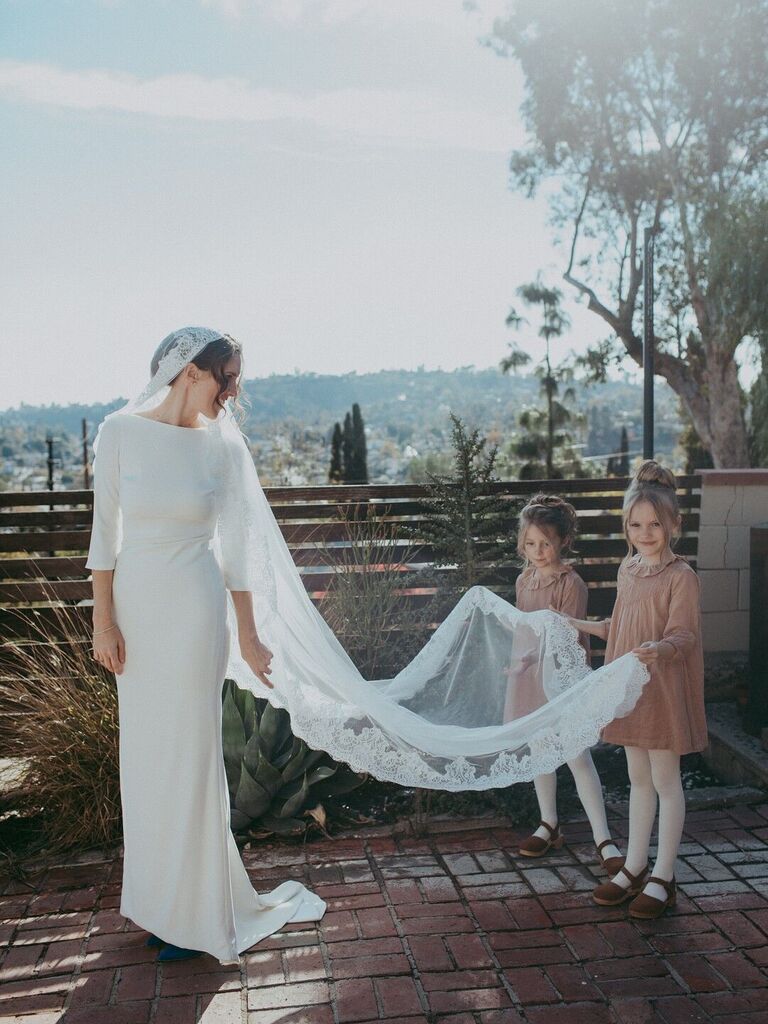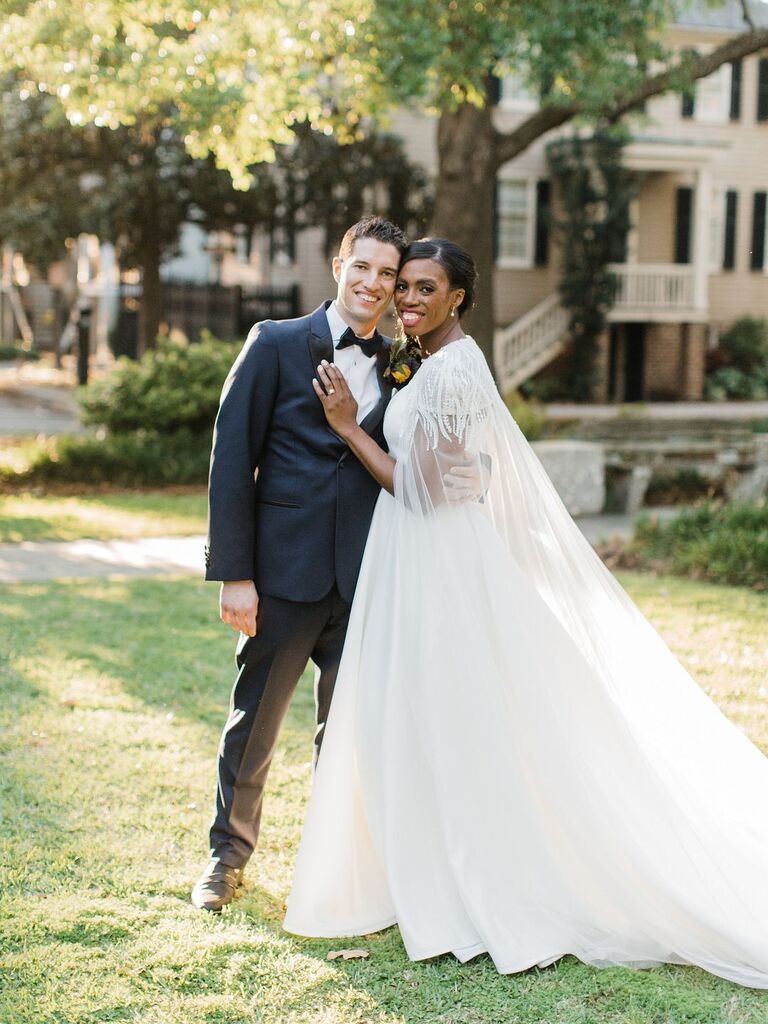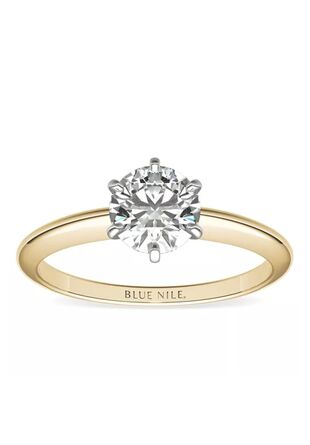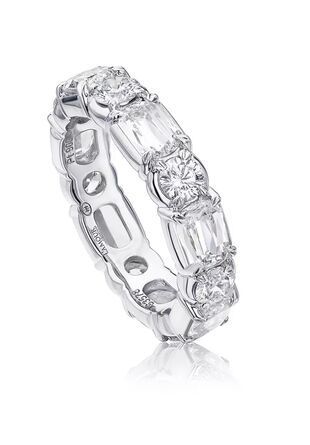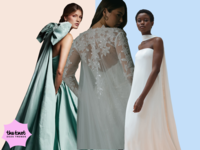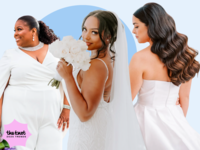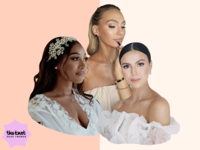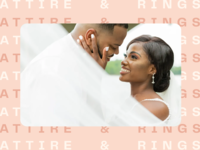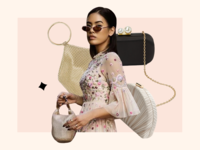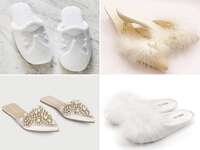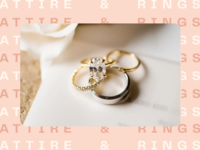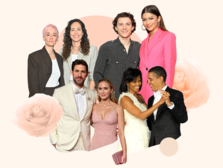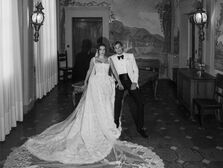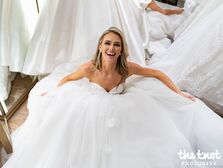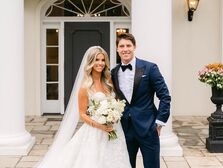The Modern Veil Styles We’re Going To See Everywhere in 2025

Dating back to ancient Greece and Rome, the wedding veil tradition is—for lack of a better word—ancient. As beautiful as they may be, you may find that classic cathedral lengths and lace just aren't "you." On the other hand, maybe your bridal style leans classic but you view the wedding veil more as an opportunity for a stylish finishing touch than a nod to tradition. Whatever your stance on the accessory may be, we're happy to report that New York Bridal Fashion Week provided no shortage of breathtaking inspiration for brides in search of modern veil ideas this year.
With that in mind, we sat down with the industry's best to bring you an expert-backed roundup of the unique wedding veils that will define the 2025 bridal fashion scene. Plus, we're bringing you a variety of ready-to-shop styles at a range of price points, so you can nail these wedding veil design ideas for your own big day. As always, The Knot Vendor Marketplace is also here to help you find the best bridal salons near you should you want to try any of these trends IRL.
Modern Veil Trends for 2025 Weddings
The consensus? Similar to the latest wedding dress trends, this year's most popular wedding veils will embody the essence of individuality and self-expression. "Brides are embracing designs that feel uniquely personal, whether through bold details, modern materials or heartfelt customization," says Ines Di Santo, founder and designer of the namesake brand. Anna Ramirez, head of design at Pronovias, echoes Di Santo's sentiment. "Whether you prefer a timeless classic or a bold, modern statement, the veil will remain a key accessory in creating a wedding day look that's as unique and unforgettable as the bride wearing it," she says. Scroll on for the top six contemporary wedding veil trends certain to do just that.
Top Wedding Veil Trends for 2025
Custom embroidered initials, pops of color, cool veil alternatives—2025's most popular takes on this traditional bridal hair accessory are anything but boring. Scroll on for the six unique bridal veils you can expect to see everywhere this year, plus details on where to shop them.
1. Short Veils
Ideal for minimal brides, the short veil was undoubtedly one of the biggest trends to grace the 2025 NYBFW runways. "Instead of long cathedral-length veils, we'll see more brides choosing veils that barely skim the shoulders," Ramirez confirms. Monique Lhuiller, creative director and founder of her eponymous brand, credits the popularity of short veils to their practicality and versatility. "They continue to resonate with modern brides who want elegance without the length of a cathedral veil," she says.
From fingertip and elbow lengths to barely-there options like flyaways and birdcages, there are endless ways to sport this look—but you can expect blushers to remain at the forefront. "They really create that dramatic bridal moment everyone loves and brides are leaning back into," says Caroline Thorpe Goldberg, bridal stylist and founder of Little White Looks. Hope Lavine, LA-based bridal stylist, agrees. "It's no longer 'my face is covered walking down the aisle,'" she says. "Now it's "How emotional will it be when my fiancé lifts the veil?"
Simple Sheer Fingertip Veil

A simple, sheer white veil is as timeless as it gets, but this one feels incredibly current thanks to the dreamy angel-cut design and fingertip length. Reviewers also say the quality is unmatched—not bad for $49.
Length: Fingertip | Materials: Polyester Tulle | Attachment Style: Comb
Beaded Blusher Veil
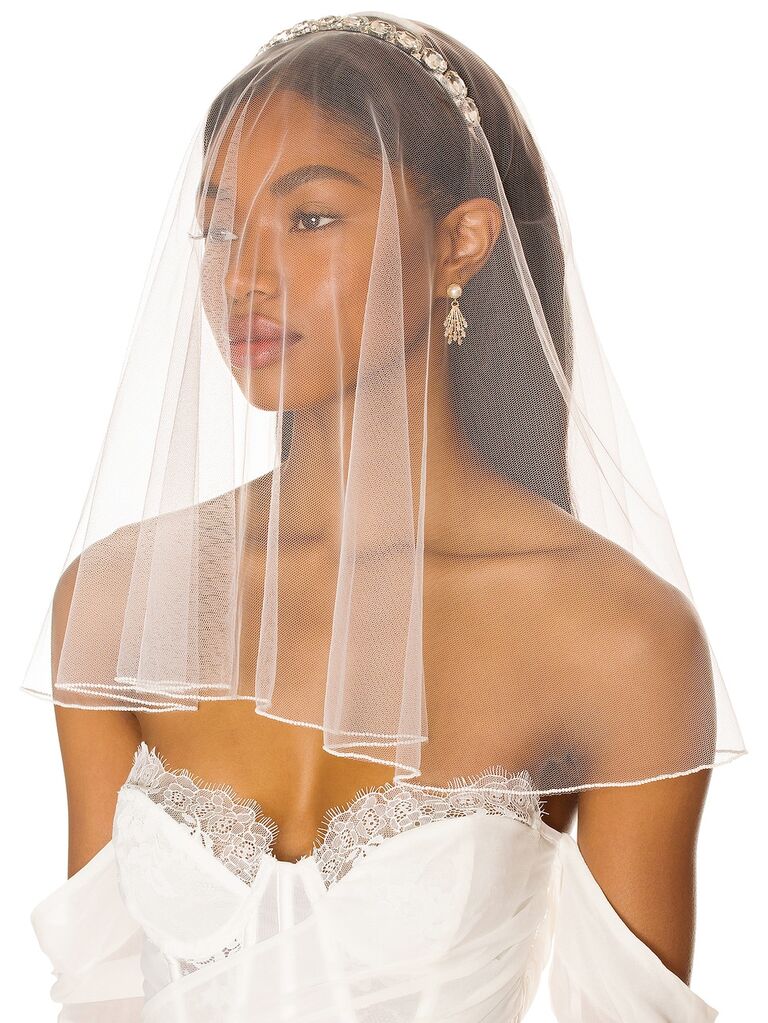
Going the blusher route allows for both a high-fashion wedding veil moment and a nod to tradition, and this one is trimmed with stunning glass beads that give it even more drama. We love it placed atop a bejeweled headband as shown above, but you can just as easily secure it with the attached gold-tone comb for a simpler look.
Length: Shoulder | Materials: Tulle, Glass Beads | Attachment Style: Metal Comb
Pearl-Embellished Midi Veil
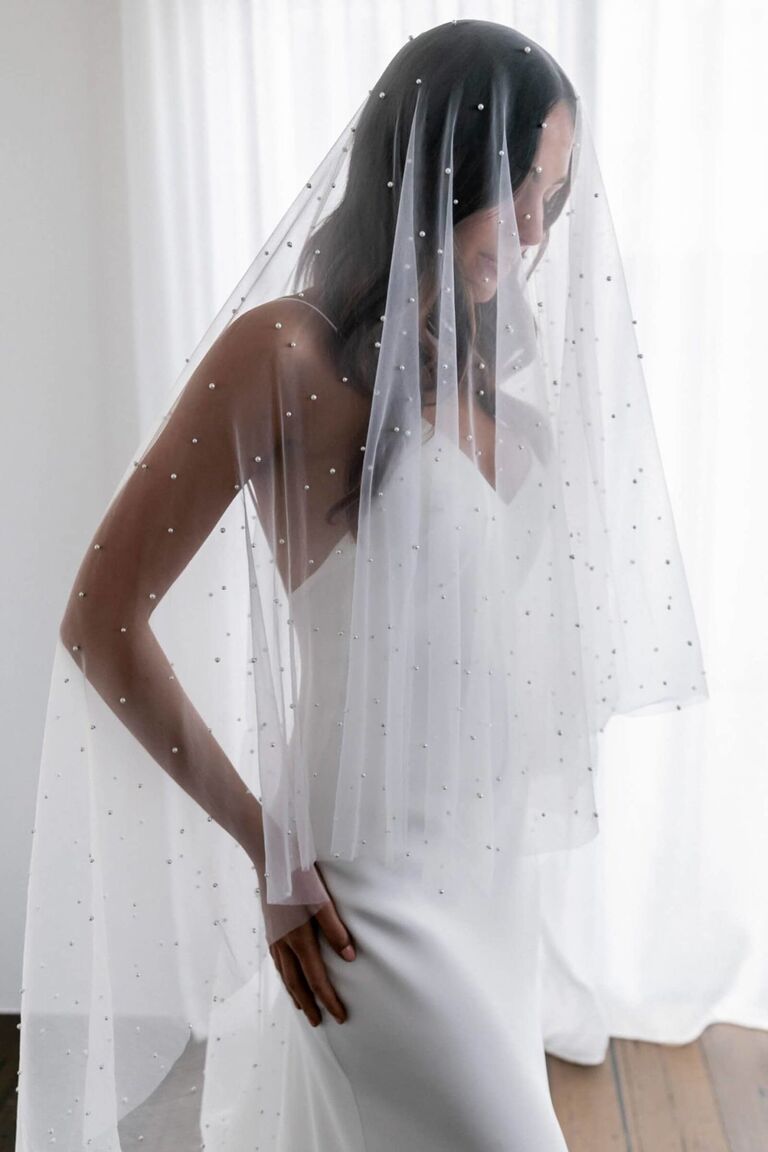
A short veil may seem simple, but it can easily skew bold with a scattering of embellishments like freshwater floating pearl drops. This Grace Loves Lace option falls on the longer side of "short," measuring just a touch longer than a typical fingertip-length style.
Length: Waltz | Materials: Tulle, Pearls | Attachment style: Metal Comb
2. 3D Floral Veils
While florals aren't necessarily groundbreaking in the wedding veil space, 2025's versions feel unexpectedly fresh thanks to bold, sculptural blooms and bright shades. But don't let those adjectives fool you—this modern veil trend can easily suit to-be-weds with minimal style, too. Anastasia Nikiforova, founder of Olivia Bottega, says her two-tier 3D floral veil is a style she regularly turns to for adding interest to simple gowns. "3D flowers made from tulle or lace bring a fresh, romantic vibe with their texture. They create soft shadows that make people want to take a closer look," she says.
The instantly recognizable blooms that cascade down Lhuillier's veils are designed to pair with her matching floral gowns, though she often sees brides wear them with understated dresses too. "Veils with 3D, colorful floral embroidery have become a favorite of our brides, whether worn with a matching dress or over a simpler style to really stand out," she says.
Two-Tier Floral Appliqué Veil

This veil from Olivia Bottega's latest collection is scattered with tulle petals for an updated take on a typical floral style. "We spent so much time brainstorming how to replace the usual 3D flowers, and petals turned out to be the perfect solution," says Nikiforova. "I've paired this veil with so many minimalist gowns, and let me tell you—it instantly elevates the look."
Length: Waist, Waltz | Materials: Tulle | Attachment style: Comb
Boho Embroidered Blush Floral Veil

Claire Pettibone is practically the queen of boho bridal veils, and if this ethereal, garden-inspired style isn't proof, then we don't know what is. Featuring embroidered blush flowers, sage leaves and silk hand-tinted roses along with beautiful hand-beaded edges, it's truly a work of art designed to take center stage in a wedding day look. It's also available in three unique styles: a cascading Watteau cape, a classic waterfall veil and a vintage-inspired Juliet veil.
Length: Chapel | Materials: Tulle, Rayon, Silk, Glass Beads, Faux Pearls | Attachment style: Comb; Clips
Voluminous Organza Floral Appliquè Veil
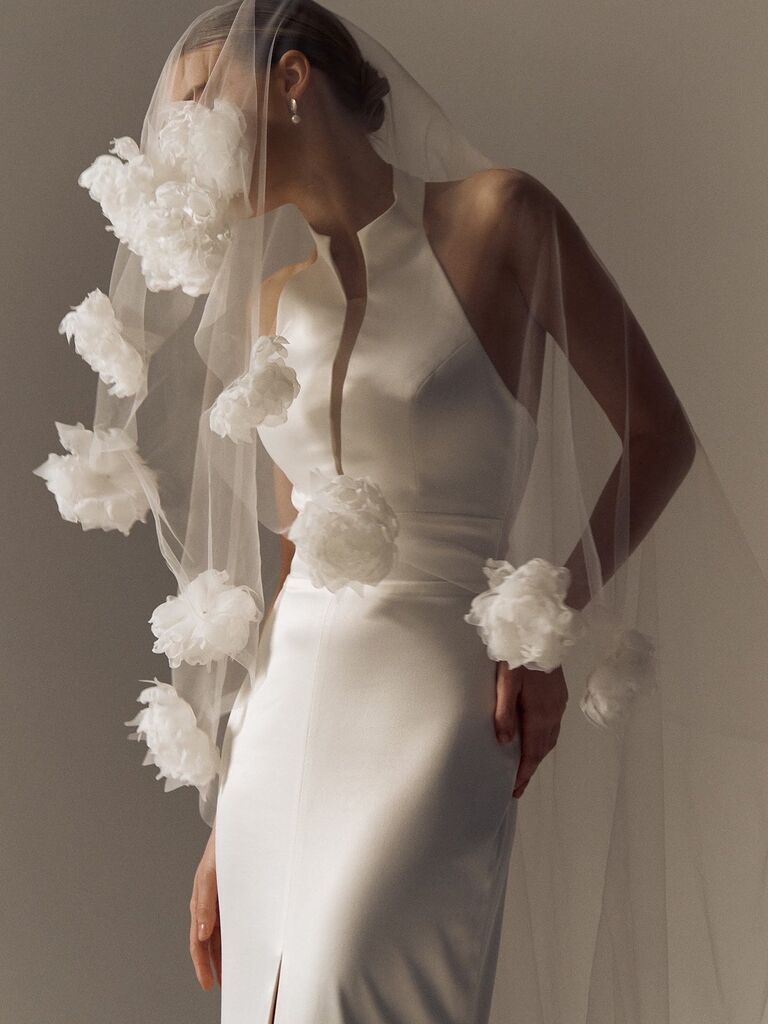
Defined by its bold, voluminous blooms in soft organza, this glamorous blusher veil feels like the ultimate affordable bridal fashion find. You can choose the length of the blusher as well as the length of the veil itself, allowing for a customized look somewhere in the $200 range.
Length: Various | Materials: Tulle, Organza | Attachment style: Drop
3. Personalized Veils
When it comes to adding personal touches to a wedding day look, brides will go far beyond "something borrowed" this year. According to Di Santo, to-be-weds are reaching for accessories that feel even more custom—think fashionable veils with embroidered initials, meaningful quotes or dates that tell a story. "They add a deeply romantic touch and turn a traditional accessory into a meaningful keepsake," Di Santo says. Goldberg presents a different take on the trend, noting a rise in brides personalizing their veils with special details from a loved one's wedding dress. "A veil presents an opportunity to think out of the box and add a sentimental touch," she adds.
Custom Embroidered Initials Veil
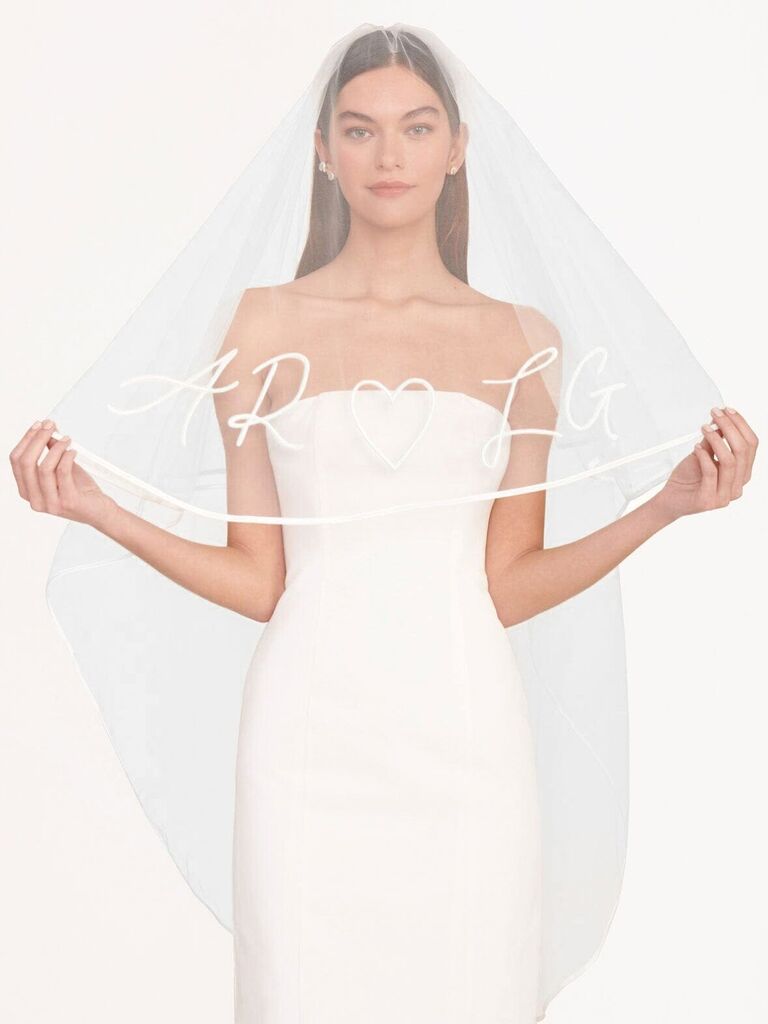
Featuring two sets of initials and a heart, this satin-trimmed STAUD veil screams "cool girl." You can place the custom embroidery on the front blusher or on the back of the longer hem—either way, the photo ops are desinted to be incredible.
Length: Waltz | Materials: Polyester Tulle, Embroidery | Attachment Style: Comb
Dainty Embroidered Initial Heart Veil
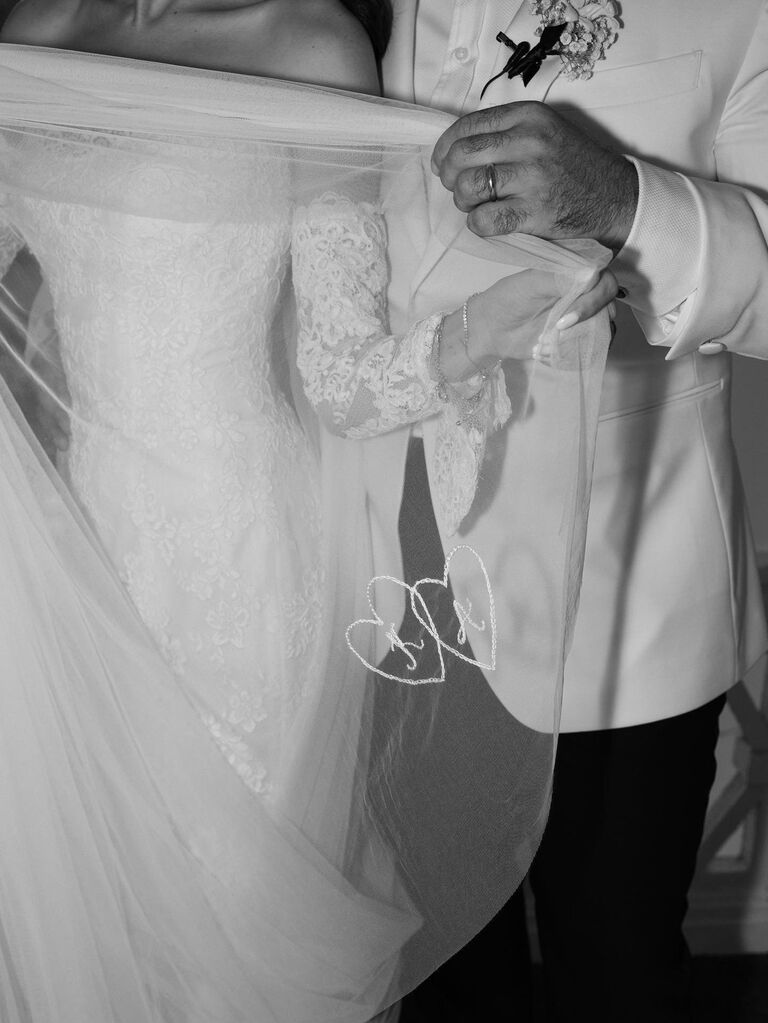
This Etsy bridal veil keeps it classic with a two-layer design, sheer tulle and eight traditional lengths ranging from elbow to royal. What sets it apart is the addition of two teeny, hand-stitched initials inside interlocking hearts—a subtle yet special touch that transforms it into the ultimate keepsake.
Length: Various | Materials: Tulle, Embroidery | Attachment Style: Comb
Personalized Embroidered Phrase Veil
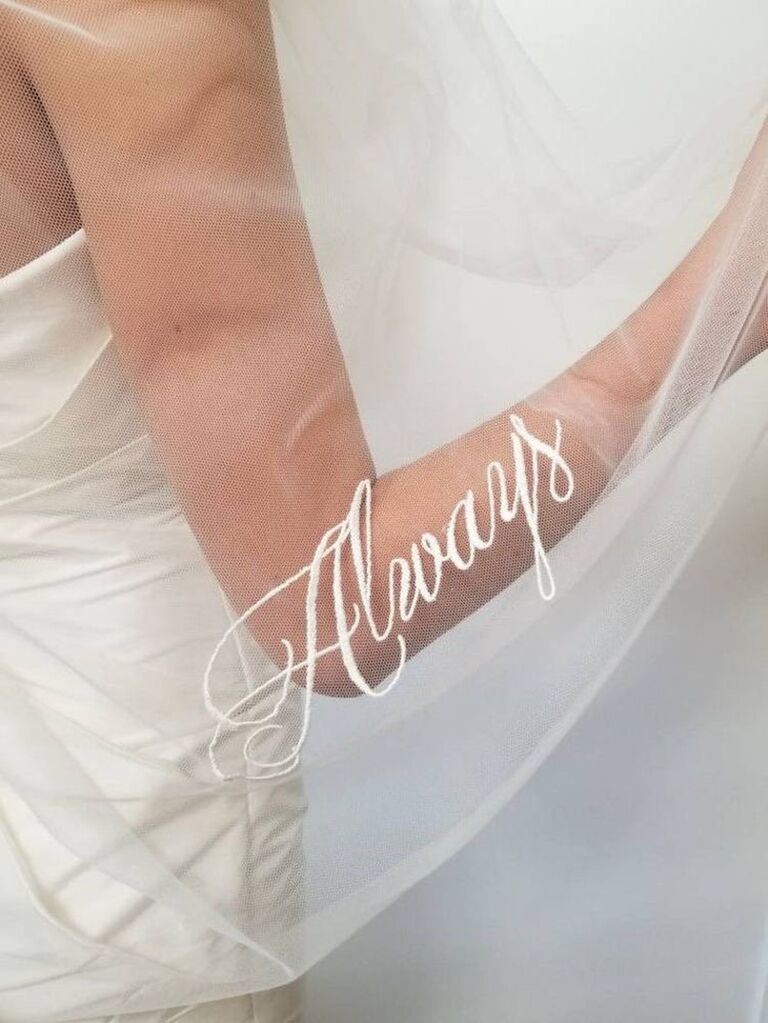
Personalization doesn't have to come in the form of initials. This veil can be embroidered with a whopping 90 characters, meaning you can customize it with anything from meaningful dates to full-on phrases. Even better, it comes in a variety of lengths in both one- and two-tier silhouettes.
Length: Various | Materials: Tulle, Embroidery | Attachment style: Comb
4. Colorful Veils
Color has only continued to rise in popularity in the bridal gown space, and the same goes for veils. A colorful veil, however, is arguably even more approachable given its practicality—to-be-weds can wear one during the ceremony, then remove it during the reception for a classic, all-white ensemble. "Colorful veils are such an exciting twist on tradition. I've always loved working with color—it brings vibrancy, personality and a sense of playfulness to a bridal look," says Di Santo. "These veils can complement the gown or stand out as a statement piece, adding depth and originality to the bride's overall aesthetic."
While color can be vibrant and maximalist, it can just as easily complement lower-key looks through simple details in soft shades like blush, lavender, or mint green. "Subtle pastel or metallic embroidery could add a modern twist to a classic accessory while complementing the dress's details," says Lhuiller.
Blue Floral Blusher Veil
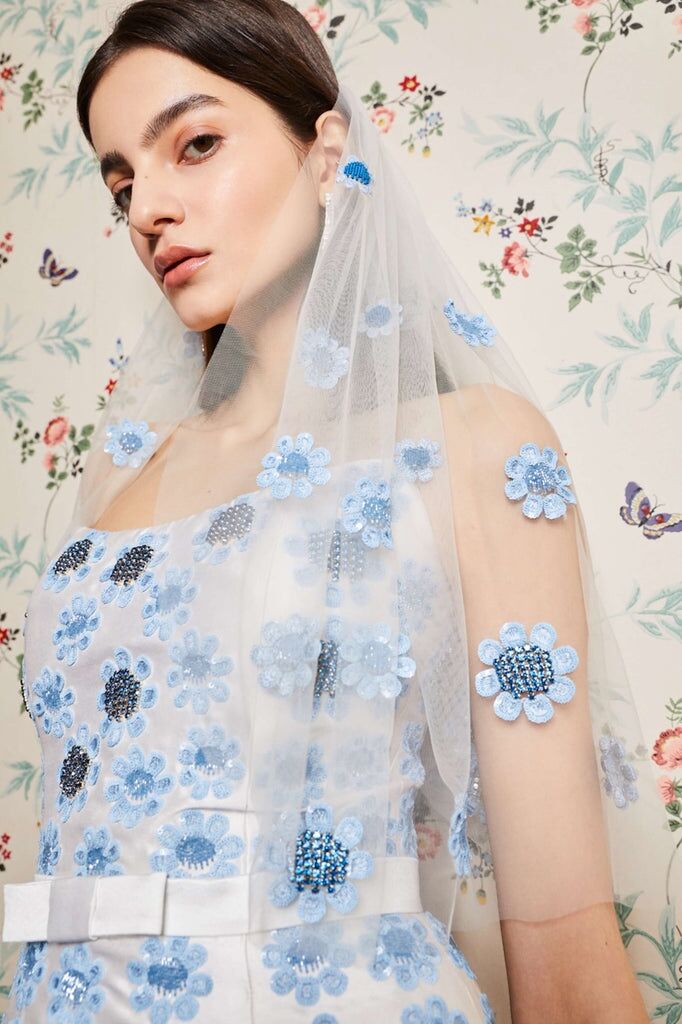
"Something blue" takes on an entirely new meaning with this unique blusher veil by Markarian, featuring stunning embroidered flowers atop light-as-air tulle. Pair it with a blue dress or let it shine alone with a classic white gown—you can't go wrong with either.
Length: Elbow | Materials: Nylon Tulle | Attachment style: Comb
Blush Pink Veil
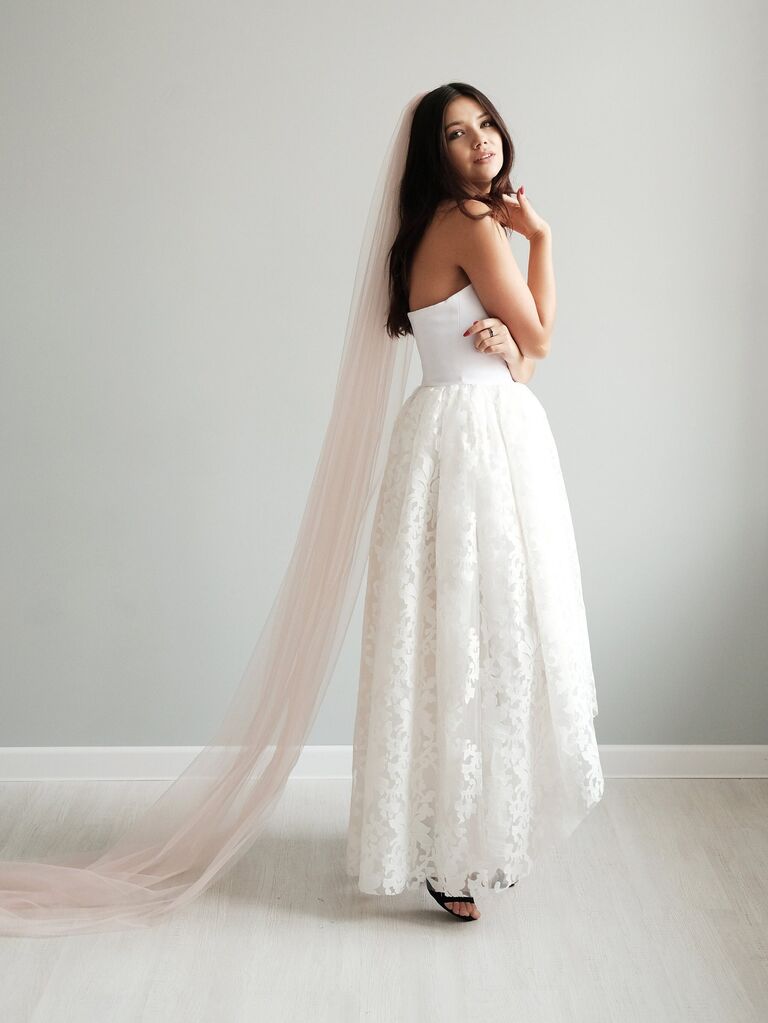
"Soft blushes, dusty blues or even ombré designs make a statement against traditional whites and ivories," says Di Santo. This ethereal wedding veil in a subtle shade of pink does just that while still feeling traditional thanks to its classic design and variety of lengths.
Length: Various | Materials: Tulle | Attachment style: Comb
Pink Ruffled Heart Fingertip Veil
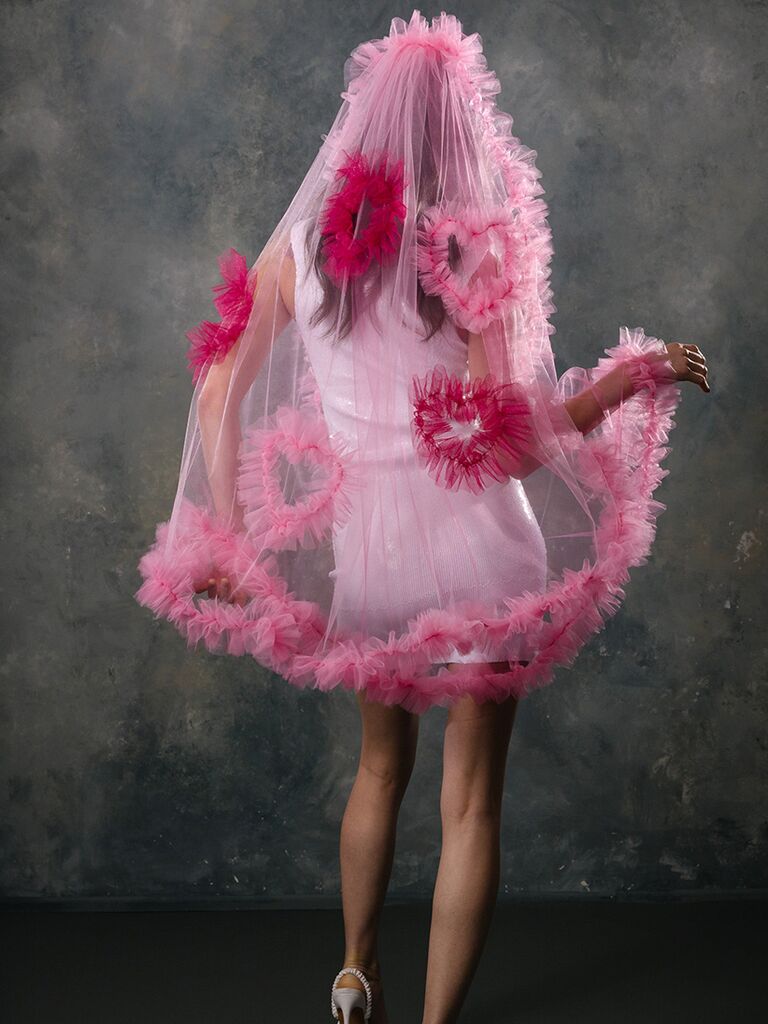
If you're into the colorful veil trend, you're likely already familiar with Madison Chamberlain's iconic Madonna Veil. Featuring sparkly ruffled hearts and a fun, fingertip length, it's ideal for the to-be-wed who wants to go all out with color and texture.
Length: Fingertip | Materials: Tulle | Attachment style: Comb
5. Vintage Veils
Whether it's vintage-inspired or actual vintage, more and more brides will be reaching for wedding veils that draw inspiration from decades past. Spanish mantillas and other timeless styles with lace edging, for example, can add a touch of traditional elegance to a simple gown or complement a lace one. "Brides love the lace framing their face and the texture and dimension it adds to their overall look," says Lavine. For a more personal take on the trend, brides can borrow a veil from a loved one. "Whether it's their mom's, grandmother's or best friend's, this is one of my favorite 'something borrowed' moments," says Goldberg. And, for those that want to emulate Grace Kelly's timeless wedding aesthetic, you'll be pleased to find that the Juliet cap is back. "Grace's simple veil, attached to a Juliet cap, feels like the ultimate trend right now," says Nikiforova. Honestly, I'm all about vintage pieces. They always come back around, and when they do, they're even better."
Cascading Lace-Trim Cathedral Veil
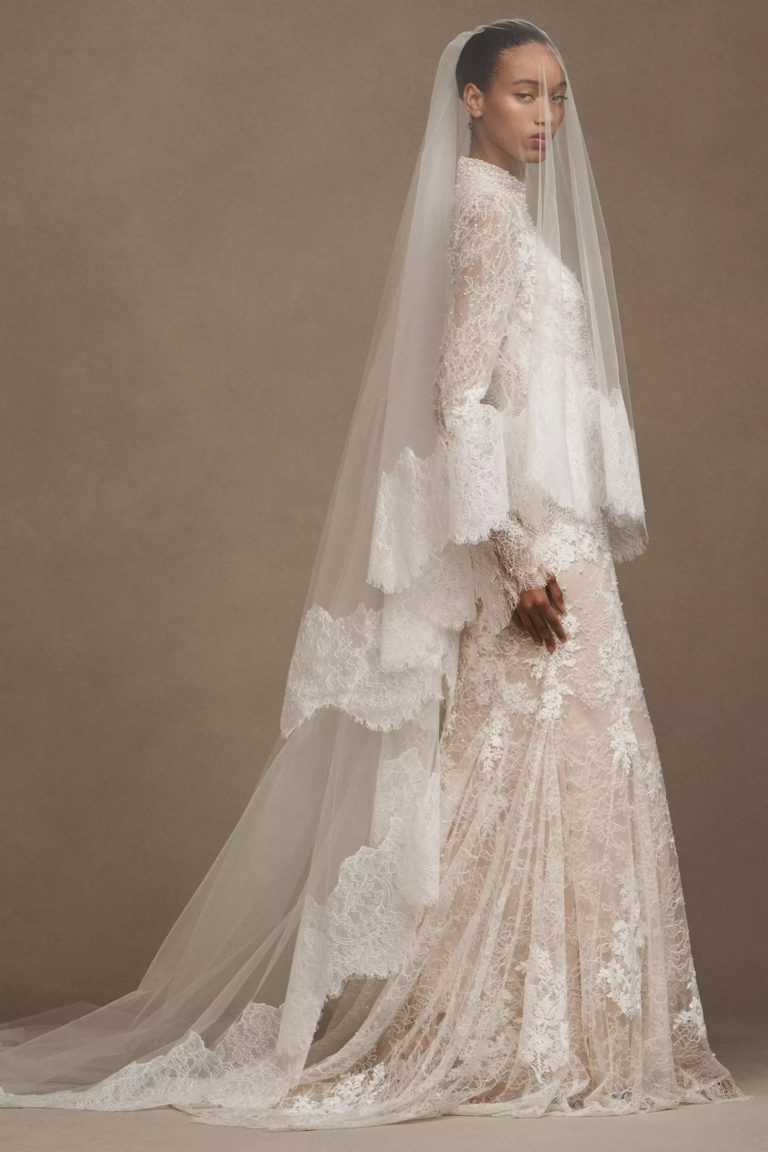
This vintage-inspired Watters veil makes a major statement thanks to bold lace trim and dramatic layers that cascade into a cathedral length. It pairs perfectly with the brand's Frances Gown, but it's just as gorgeous styled with something far simpler.
Length: Cathedral | Materials: Polyester Tulle, Lace | Attachment style: Comb
Delicate Juliet Cap-Style Veil
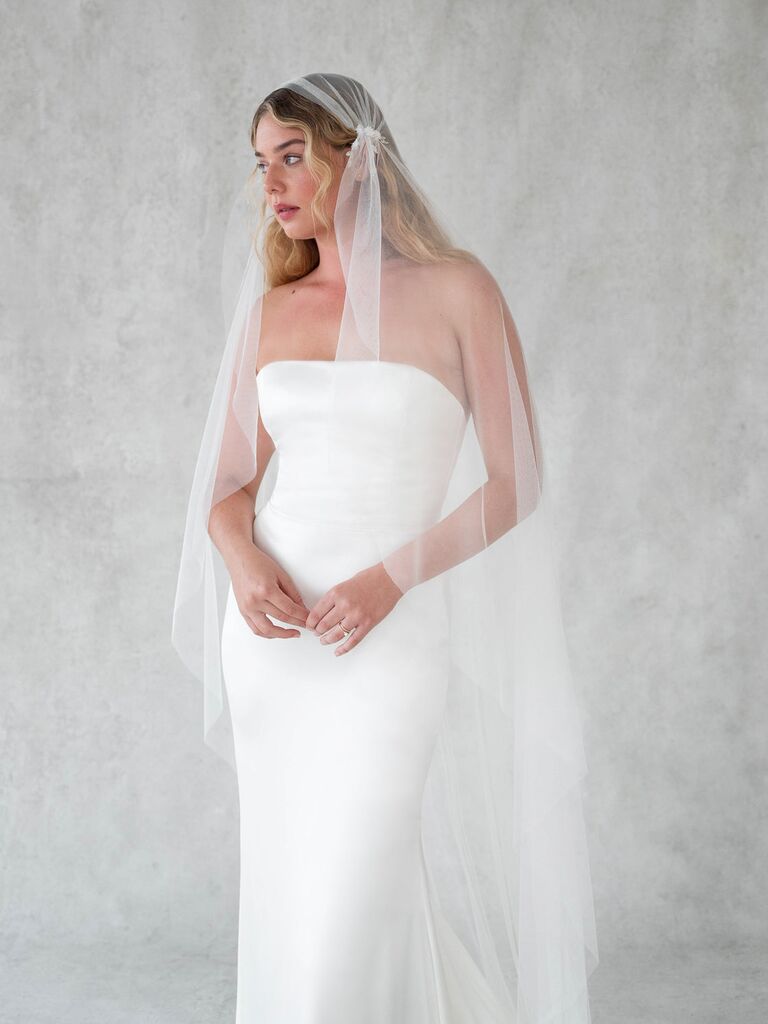
If a Juliet cap feels too adventurous for you, Alexandra Grecco is here to change your mind. Her Delancey Veil, featuring two beaded floral clusters that create its Juliet-style cap, provides a modern and refined take on the timeless trend. If you ask us, it was practically made to provide a finishing touch to an understated silk wedding gown.
Length: Fingertip; Cathedral | Materials: Tulle, Beads | Attachment style: None
Chantilly Lace Mantilla Veil
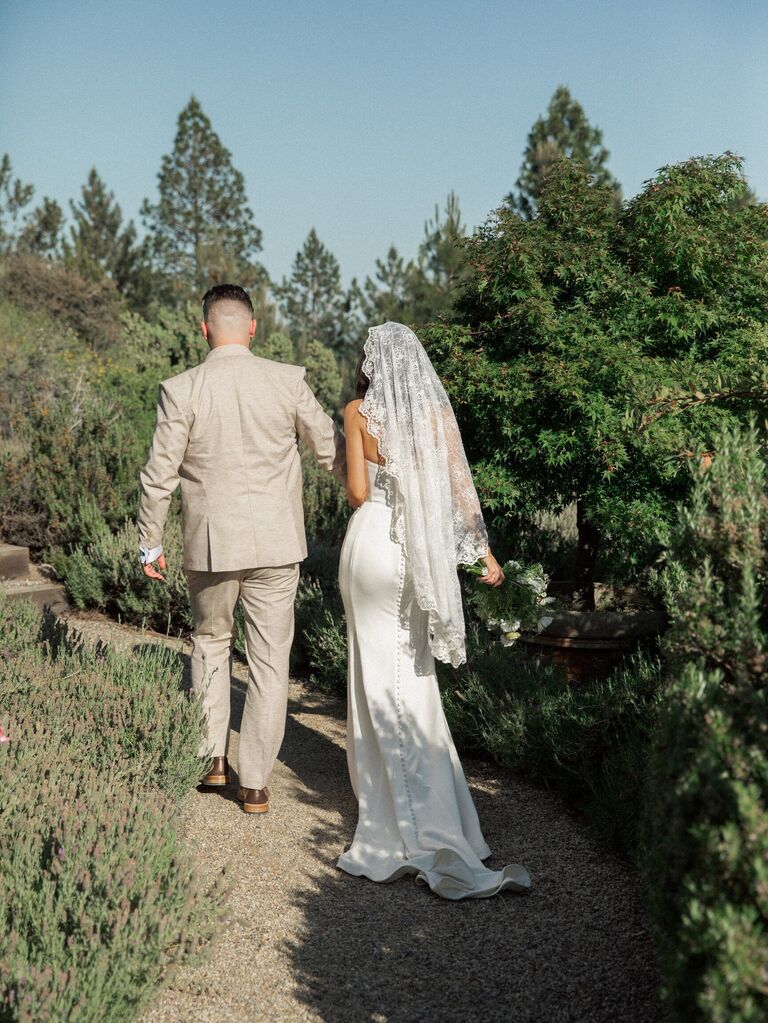
With its soft floral-embroidered lace, scalloped edges and delicate eyelash fringe, this handmade mantilla veil will add undeniable romance and a touch of vintage-charm to any wedding look. It's available in four lengths ranging from elbow to floor, and each one is equally ethereal.
Length: Various | Materials: Tulle, Alençon Lace | Attachment Style: Comb
6. Veil Alternatives
From dramatic dusters to subtle, flowing scarves, there have always been a variety of veil alternatives out there. But with a growing trend toward forgoing tradition and doing what feels true to you, 2025 is the year brides will truly be embracing them. "Capes, embellished tulle jackets and removable Watteau trains are growing in popularity as chic and unconventional options for the modern bride," says Lhuillier. With its effortless ability to blend elegance, modernity and uniqueness, the anti-veil might just be the most unusual yet most approachable bridal accessory trend on the horizon for 2025. If you're currently deciding whether or not to wear a veil, this could be the perfect middle ground. "It's all about what makes you feel amazing on your big day and completes the look," says Goldberg. "Brides are continuing to reach out of the box for their bridal looks, and veils will be no different."
Flutter-Sleeve Tulle Jacket
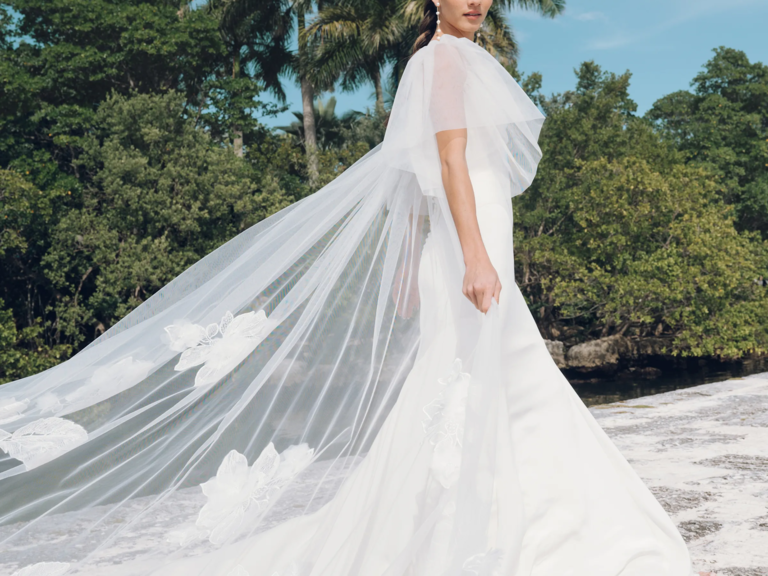
Glamorous and feminine, Jenny Yoo's Hayworth Cape is arguably even more dramatic than a cathedral veil. Plus, it's versatile—the scattered 3D floral embroidery is paired with voluminous flutter sleeves, allowing for a seamless second look that will complement even the simplest wedding dresses.
Length: Cathedral | Materials: Tulle, Embroidery
Floor-Length Lace Neck Scarf
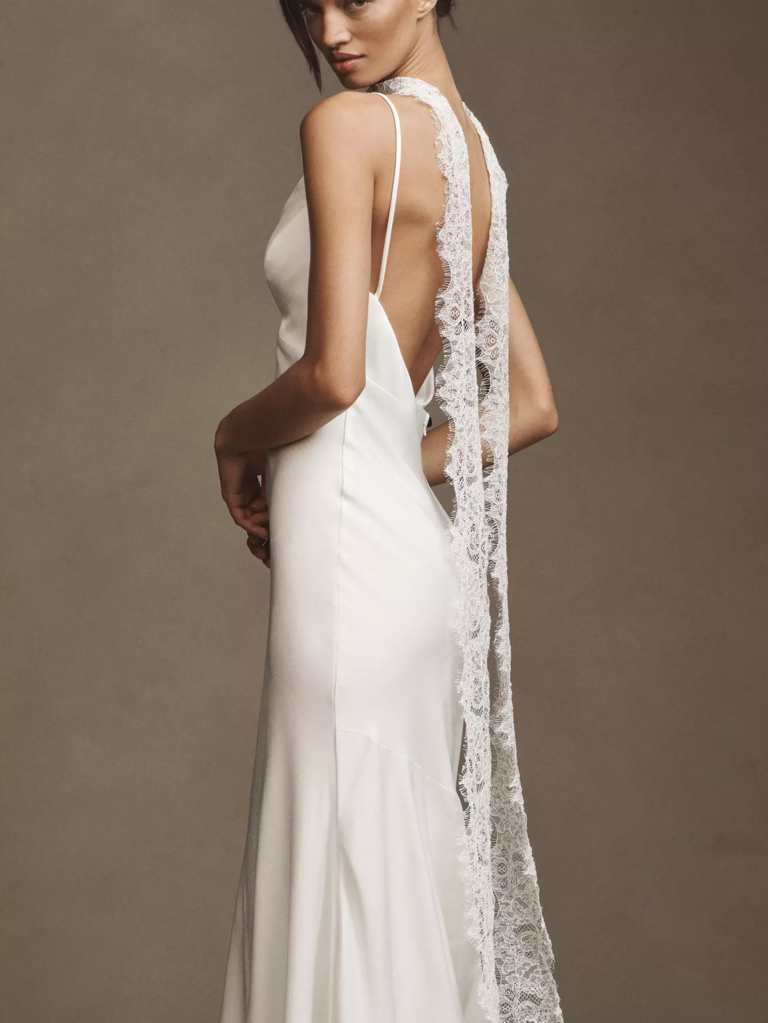
A floor-length neck scarf provides a subtler approach to the veil alternative trend without skewing too far from "bridal." This one, for example, still feels wedding day-worthy thanks to its beautiful lace and scalloped edges.
Length: Floor | Materials: Polyester Lace
Flowy Chiffon Cape

With its short front and long, cascading train, this sheer bridal cape is the perfect way to add coverage and warmth to virtually any bridal look. It comes in seven lengths and two shades, making it easy to customize depending on your preferences.
Length: Various | Materials: Chiffon


